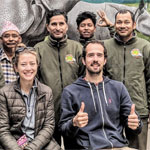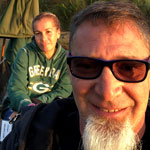
“We had a great 2 days safari with several activities (jeep, Elephant, canoe etc). Everything was Simply perfect and the staff organized each step properly. The resort Is clean, beautiful and food very good. Furthermore, staff tried accommodating every our request. We asked them to organize transport to Lumbini, as well the transit to India to get to Gorakhpur and continue our trip: again, everything was managed un a very professional and effective way. For sure, we Will Be back and contact them to organize our next trip in this beautiful area. 100% recommended!“
- GIANFRANCO DIRETTO - Italy

“ From the moment we arrived the team at Jungle Safari Resort were fantastic. They attended to our every need and made us feel like family. We did the 3 night, 4 day package with an extra all day Jeep Safari. We saw countless one horned rhinos, crocodiles, all four deer types in Chitwan, mongoose, wild boar, rhesus & langur monkeys, Burmese Python and an impressive array of birds; including 4 species of kingfisher, asian pied hornbill, woodpeckers, stork, serpent eagle, oriel, drongo the list goes on! Our guide Narayan was very knowledgeable and even knew latin names of all the flora & fauna. Sunil looked after us each evening in the dining hall like we were family, and Sushil drove us to each location we attended. We don't often say this but this would be somewhere we would like to revisit in future.“
- Andreas Tredimas - England

“ We booked a private Jeep Safari and our room was booked here at JSR. Jungle Safari Resort shattered our expectations. This is a must stay at resort in the Chitwan area. Staff great , food spectacular, room amazing. When going to Nepal and going to see the wildlife (tigers, elephants, rhinos and crocs) be sure to stay here. Such a great experience.“
- Ed & Sonia Campo - USA

“Very good location in the centre of Sauraha but near the river and national park. Very friendly and helpful staff Very good and delicious food & breakfast. Clean and wide room with comfortable bed, AC, TV and balcony. Large and beautiful garden. Shops, restaurants and bars around the hotel. Transportation services. Strong and uninterrupted wi-fi. Next to the Cultural House of Sauraha where you must see traditional dance and music show. Very quality guidance (You should definitely meet Narayan, king of the guides) Hotel's representative (Sangam) will help you in every way about Nepal and Chitwan National Park. Good Nepali people, colorful culture and magnificent nature & wildlife.“